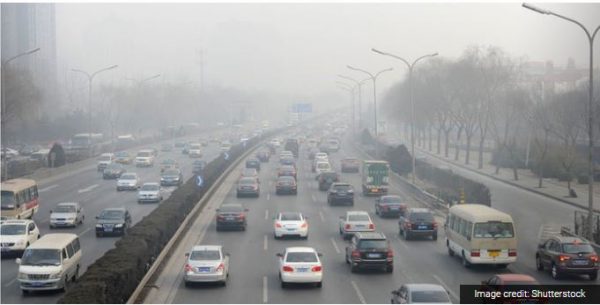

 people viewed
people viewedWhile the government is looking at effective, long-term solutions for the ongoing air pollution crisis, the adoption of EVs is one of the most promising and impactful solutions of all
The Indian government has set an ambitious target to promote the adoption of electric vehicles (EVs) in the country. By 2023, it plans to convert 100% of its three-wheelers into battery-run vehicles. By 2025, this rule will be applicable for most two-wheelers as well. The timely implementation of this strategy might seem like a far-fetched idea, but considering the environmental crisis we are currently facing, it is definitely worth the effort. The reason for this urgency is that India has witnessed a three-fold increase in the number of petrol and diesel-run vehicles since 2001, and our carbon emissions have skyrocketed.
Astonishingly, air pollution is taking 1.2 million lives each year and, therefore, is becoming a national concern which demands urgent addressing. Thankfully, the government is looking at effective, long-term solutions for the ongoing pollution situation—the adoption of EVs being one of the most promising and impactful solutions of all. Powered by clean energy, EVs can significantly reduce the country’s combined carbon footprint, thereby controlling pollution levels to a large extent. However, due to factors such as high initial costs and a lack of EV support infrastructure, the adoption rate of EVs in the country has remained underwhelming so far.
Amid such a backdrop, how can India fulfill its ambitious goals of becoming a cleaner, EV-led nation? Here’s looking at some ways to do so:
Government initiatives
Recently, finance minister Nirmala Sitharaman announced tax rebates of up to INR 1.5 lakh on interest paid on EV loans, while the GST Council reduced the tax levied on EVs and EV chargers to 5%. In another welcome move, a corpus of INR 10,000 crore was created to promote EV manufacturing in the country under the new FAME II scheme. Previously in 2017, the CAFE (Corporate Average Fuel Efficiency) norm came into force which mandated that average CO2 emission be less than 130 gms per km till 2022 and below 113 gm per kilometer thereafter.
The government’s efforts are aligned with its mission as these initiatives will contribute to the mass adoption of EVs. More concerted efforts such as the aforementioned are expected from the government in the near future. This will further boost the number of EVs we see on Indian roads.
Localized manufacturing:
The lithium-ion batteries used in new-age EVs are currently being imported from foreign markets such as China and the US. This is why batteries account for 70% of the total cost of EVs, which is perceivably high as of now. The solution is indigenizing battery production in India by developing our technological capabilities, and fast. This can be done by offering income-tax benefits and custom duty exemptions on lithium-ion cells, thereby putting India on the fast-track to becoming an EV and EV battery manufacturing hub.
Incentivizing adoption
The initial cost of EVs, as discussed above, is a major hindrance to large-scale adoption. However, since EVs are quite cost-effective in the long run, this should not be the case. The reduction of GST on EVs and their chargers, income-tax breaks for buyers and other such incentives have already reduced the initial cost of EVs. Further incentivizing the purchase of EVs through creative schemes and increasing the awareness around such schemes will ensure that adoption rates reach the desired percentage, sooner than expected.
Offering exceptional customer service
Cost-effective maintenance and customer service are essential to ensure that the country’s EV dream is realized in time. Currently, there is a lot of skepticism among potential customers regarding the after-sales support from EV manufacturers and dealers. To assuage such fears, manufacturers must provide warranties and prompt servicing solutions as and when required. The eight-year warranty offered on a recently launched EV is a commendable step that should be replicated by all manufacturers. The government, on its part, can offer guidelines for EV companies to stock and provide spare parts and after-sale services in a homogenized manner across the country.
Creating the right EV infrastructure
Currently, there are around 222 charging stations with 353 charging points for about 187,802 electric vehicles in the country. As a result, people feel that purchasing EVs might not be the most practical decision given the lack of support infrastructure. The government and other stakeholders of the EV space can upturn this situation by developing the support ecosystem at a faster pace. This will remove any range anxiety that potential users might feel and promote higher adoption of EVs.
In a bid to channelize green-growth across the country, the government, manufacturers, dealers and other stakeholders are making commendable strides. As the aforementioned factors will be taken into consideration, infrastructural gaps will be bridged and adoption will skyrocket. To save India from the ill-effects of the current pollution levels, this is no longer an option. It is the only road ahead.